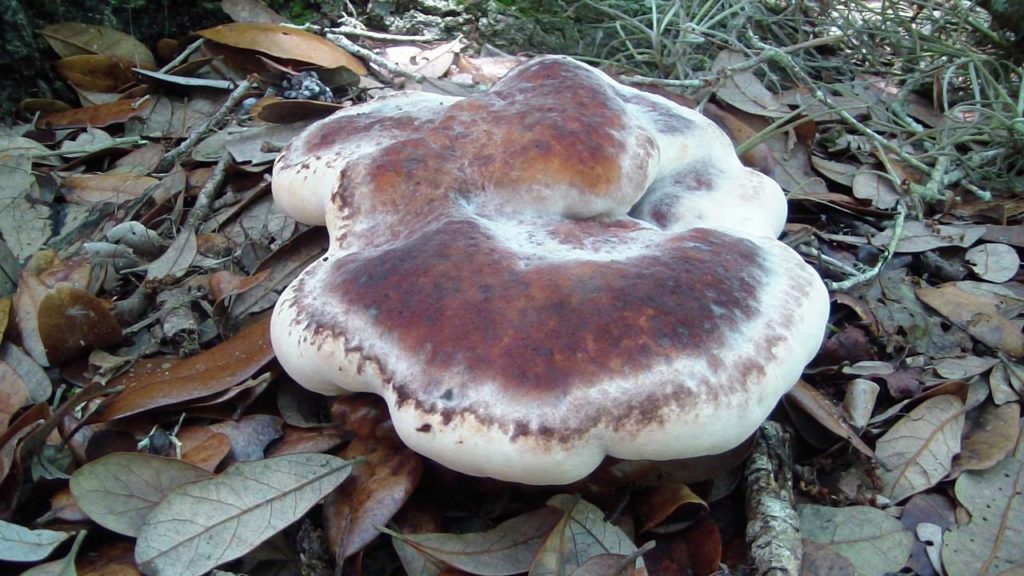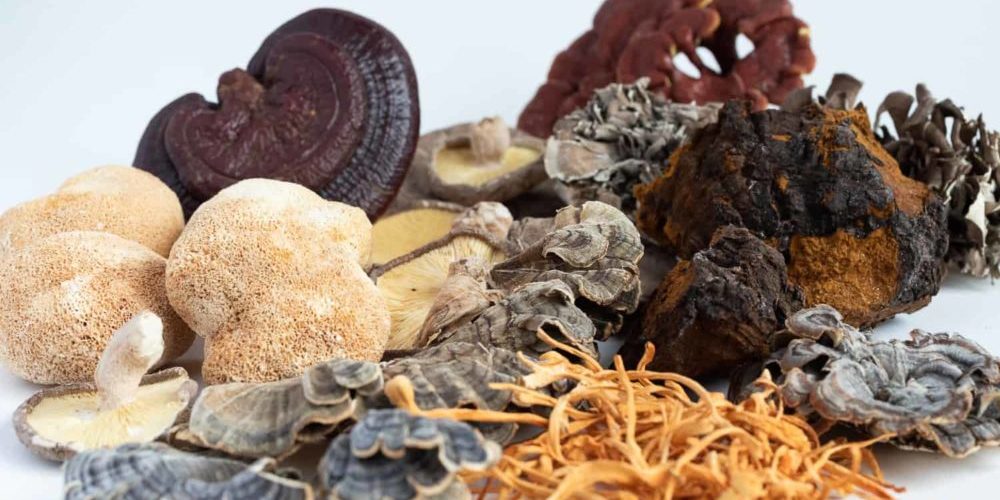The Laetiporus persicinus is an edible mushroom that is also known as the White Chicken Mushroom or Spring chicken. It can grow very large in size, including to the size of a platter. Laetiporus persicinus was first scientifically described as Polyporus persicinus in 1853 by Miles Joseph Berkeley, a founder of the science of plants and plant pathology and Moses Ashley Curtis an American botanist [1]. It has been found to grow in in Africa, Australia, Asia, and in America is found centrally, but is most common in southeast America. Laetiporus persicinus is closely related to the Chicken of the woods mushroom or chicken mushroom and are both in the same genus; however, they are genetically very different. Laetiporus persicinus may well be re-categorized in the future since it is not typical of the Laetiporus species.
It grows from late spring to late summer, but most successfully in late July or august. Unusually for fungi, Laetiporus persicinus is more successful in dry weather, rain water will quickly decompose the fungus to a black slime.

My name is Austin Collins.
I've dedicated my life to Mushrooms.
I believe Mushrooms are the best kept secret when it comes to health and well being.
For that reason, I would like to share a company with you that in my opinion makes the best mushroom products on the market.
The company is called Noomadic Herbals, my favorite supplement they make is called "Mushroom Total".
I take their products every day and they have helped me think better and have more energy. Give them a try.
-Austin
Laetiporus Persicinus Identification and Description
Fruiting body: The flesh is firm and spongy; medium to very large in size and usually circular in shape with fine white hairs on the surface. The mushroom is brown-orange with colors of red, white and purple. The darker colors appear more with aging. The pores under the mushroom are white and bruise brown when handled. A well nourished Laetiporus persicinus can fuse multiple fruiting bodies leading to sizes of a meter long.
Stem: Stocky and central.
Smell: Musty and not described as pleasant.
Taste: Described as woody or unpleasant due to the smell.
Spores: Oval to elliptic; clear and smooth.
Spore color: White until touched when turn dark.
Edibility: Edible.
Habitat: Both living and dead wood; hardwood and softwood. A decomposer that primarily grows on oak trees found either next to the trees or fruit directly from the wood.
Ecology: Can be Parasites or Saprobes.
Division: Basidomycota; Class: Agaricomycetes; Order: Polyporales; Family: Fomitopsidaceae; Genus: Laetiporus and Species: Persicinus.
Laetiporus Persicinus Look-Alikes
Laetiporus persicinus is similar to chicken of the woods, Inonotus hispidus and Phaeolus schweinitzii. Chicken of the woods is thinner that Laetiporus persicinus, in addition to being bright orange and having a more pleasant smell. Inonotus hispidus most closely resembles Laetiporus persicinus, but it has a tougher texture, is more yellow in color and will usually be found growing directly from wood. Phaeolus schweinitzii has a similar growth pattern to Laetiporus persicinus and can found in the same places, but is has a yellow-brown pore print as opposed to the white color of pores for Laetiporus persicinus.
Laetiporus Persicinus Benefits
Unlike many mushrooms, there are no reported medicinal benefits for Laetiporus persicinus.
Laetiporus Persicinus Dosage
Laetiporus persicinus is considered an edible mushroom and if consumed it is best young. The unpleasant smell can be off putting, which does not disappear when dried. There are no reported dosage recommendations; however, one should always err on the side of caution when trying new mushrooms to ensure there are no allergic reactions.
Laetiporus Persicinus Toxicity, Safety & Side Effects
There is no suggestion that Laetiporus persicinus is toxic however, do not eat any fungi that has not been professionally identified to avoid ingesting poisonous mushrooms. It is also advisable to cook all wild mushrooms before eating. There are reports of adverse side effects from eating Laetiporus persicinus raw although, it should be considered that this may be due to volume or lack of correct identification.
References:




I presume that one can transplant them to tree stumps at the correct time? to enjoy the beauty while they enjoy the nutrients.
Done!
Thx for the info.